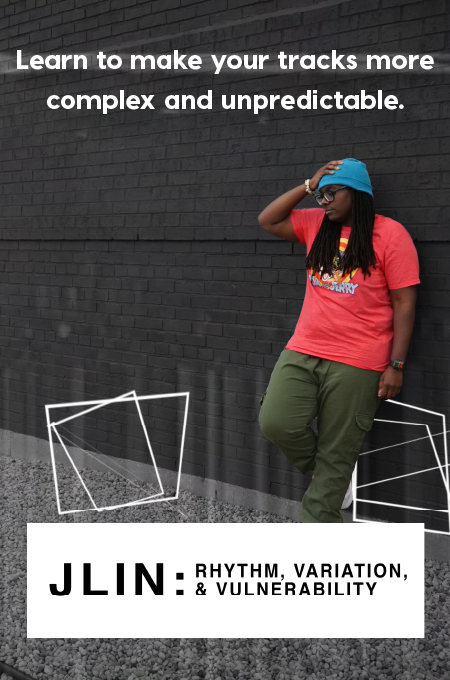
+ Welcome to Soundfly! We help curious musicians meet their goals with creative online courses. Whatever you want to learn, whenever you need to learn it. Subscribe now to start learning on the ’Fly.
Practicing and performing music has many challenges. With migraines, these challenges are magnified. As with any job, when a migraine comes on, I am faced with the question, “How am I going to get done what I need to get done?”
I know I am not alone. Every day I find musicians on Twitter that are asking this same question, so I thought I would spend a few minutes sharing my experience in the hope that it will help others in the same boat feel a little less alone and a little more understood.
For me, there is a difference between how I deal with practicing and performing when I’m dealing with a migraine. With performing, I feel there aren’t really many options since it’s very difficult to cancel a performance, especially when it involves other musicians. But here are some things I keep in mind.
I lower my expectations.
My goal is simply to get through the performance as gracefully as possible. More often than not, I lose the abilities to sing along with the music and to immerse myself in musical intention. So I’ve come to accept that in situations like this, I may have to perform in a way that isn’t as musically satisfying to me. Very often, it feels like it’s truly an act of survival and I have to trust that my years and years of being musical and my musical training show through, in spite of what’s going on (or not going on) in my head.
I count on adrenaline helping me out.
While I’m playing music, my migraine usually fades into the background slightly, so I try to stay positive and look forward to a little relief while I’m playing.
If I’m performing by myself, I very intentionally take the edge off all the tempos that I can.
When I’m experiencing a migraine, my brain has a very difficult time working as quickly as it usually does. There is also less coordination between my brain and my body, so having a little extra time to let my brain reset or catch up with itself can be beneficial.
I actively remind myself to breathe whenever I can.
Before I start playing, in between phrases, during rests, and right before difficult sections, I tell myself to breathe. It can be so tempting when I’m in pain to hold my breath, as if that will get me through the situation faster. Unfortunately, that’s not very helpful and tends to make matters worse.
I’m intentional about keeping my eyes relaxed.
I try not to focus on reading the notes on the page quite as much as usual. Staring and not blinking can make my migraine worse.
Along with the previous point, I rely more on my memory of how it physically feels to play the music. This keeps my brain from getting too busy and stressed, which definitely doesn’t help the pounding in my head.
When it comes to practicing, there’s actually a lot more flexibility. A lot of my friends mention that they rarely practice when impaired. That’s understandable and perfectly acceptable since most of us end up having to spend much of our time hiding under a blanket in a dark room without any sound, doing nothing except waiting for the migraine to decide to take a hike.
If I’m fortunate enough to have a low to mid-grade episode, however, I do try to practice a little bit, especially if I’m getting ready for a performance. I use the same tips listed and very intentionally choose modes of practicing where speed and perfection are not the focus. I also do a lot of practicing with my eyes closed, since that helps with the sensitivity to light. And I keep the volume either at piano or pianissimo.
Doing both of these things are good for practice sessions when I’m feeling good, but I find them especially helpful during these times. And more often than not these exercises end up deepening my interpretation of the music and improving my ease of movement. I guess that’s a positive aspect of having migraines. I may as well make lemonade from lemons, right?
To all my fellow sufferers out there, I’m so sorry you’re dealing with them too! Go easy on yourself. And if you manage to get through a performance or to eke out a somewhat decent practice session, no matter how short, know that you are a superhero in my books. Pat yourself on the back (gently) and then hide back under your covers and rest knowing that you are amazing.
Feel free to leave your own thoughts and suggestions based on your experiences in the comments. And if someone has a foolproof cure for migraines, do let us know. If you want to read more about my personal experiences with migraines and searching out solutions for myself, here are two more pieces I’ve written, “Mired in Migraines” and “Thankful for my migraine?!” Enjoy!
Improve all aspects of your music with Soundfly.
Subscribe here to get unlimited access to Soundfly’s premium course content, an invitation to join our private Slack community forum, exclusive perks from partner brands, and massive discounts on personalized mentor sessions for guided learning. Learn what you want, whenever, with total freedom.
—
 Erica Sipes has spent most of her musical time as a piano collaborator, playing with and coaching musicians who play just about every instrument. Her passion is helping musicians at all stages discover how to approach music, practicing, and performing in a way that leaves them empowered to make their own musical decisions, encouraged, and excited to share their talents with others.
Erica Sipes has spent most of her musical time as a piano collaborator, playing with and coaching musicians who play just about every instrument. Her passion is helping musicians at all stages discover how to approach music, practicing, and performing in a way that leaves them empowered to make their own musical decisions, encouraged, and excited to share their talents with others.




